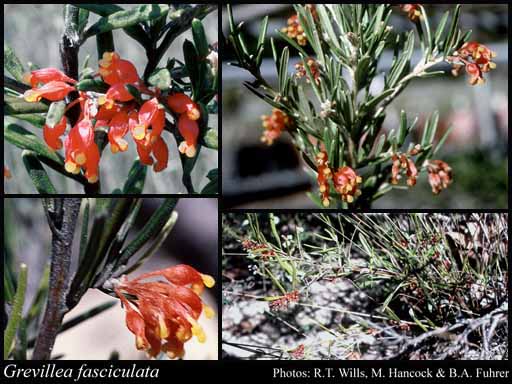- Reference
- Prodr. Suppl. 20 (1830)
- Conservation Code
- Not threatened
- Naturalised Status
- Native to Western Australia
- Name Status
- Current
Loose to moderately dense spreading shrub, 0.3-1.2(-1.8) m high. Fl. red & yellow/orange, Mar to Nov. Sand, loam, gravel. Often in moist situations (swamps, creeks), sandplains, hillsides.

Scientific Description
Shrubs, 0.3-1 m high; branchlets hairy, not glaucous. Leaves alternate, 10-65 mm long, 1-7 mm wide, hairy, on the abaxial surface, the hairs straight; lamina flat, clearly widest above the middle or more or less the same width throughout, entire, the margins recurved or revolute, exposing the lower surface of the leaf blade or enclosing the lower surface of the leaf blade, forming a single groove. Inflorescences terminal, red; pedicels 2-4 mm long. Perianth 4-7 mm long; tepals all free after flower opens, hairy, simple-hairy; ovary hairy, stipitate, the stipe 0.5-1 mm long; pistil 6-8 mm long, yellow or orange, pollen presenter lateral, style hairy. Follicles hairy, not viscid, dehiscent, 10-15 mm long. Flowers in May, June, July, August, September, October or November. Occurs in the South-west (SW) Botanical Province(s), in the Avon Wheatbelt (AW), Jarrah Forest (JF), Mallee (MAL) or Esperance Plains (ESP) IBRA subregion(s).
Distribution
- IBRA Regions
- Avon Wheatbelt, Esperance Plains, Jarrah Forest.
- IBRA Subregions
- Fitzgerald, Katanning, Southern Jarrah Forest.
- IMCRA Regions
- WA South Coast.
- Local Government Areas (LGAs)
- Albany, Cranbrook, Gnowangerup, Jerramungup, Plantagenet.